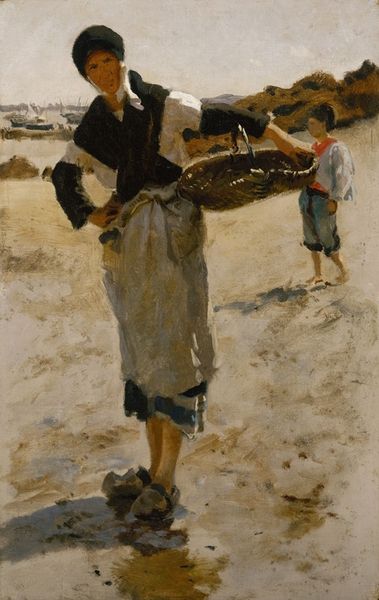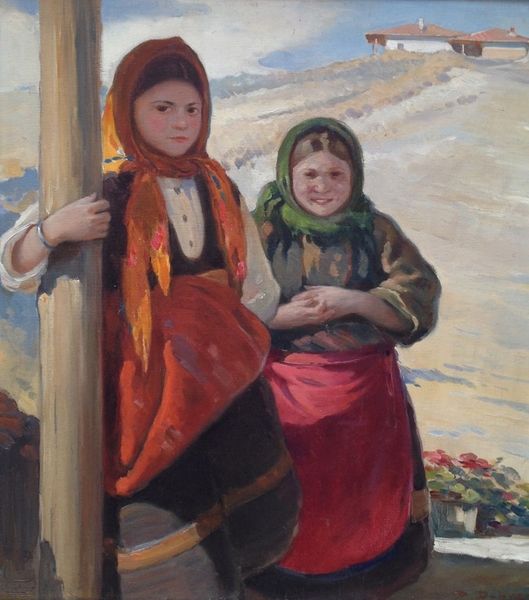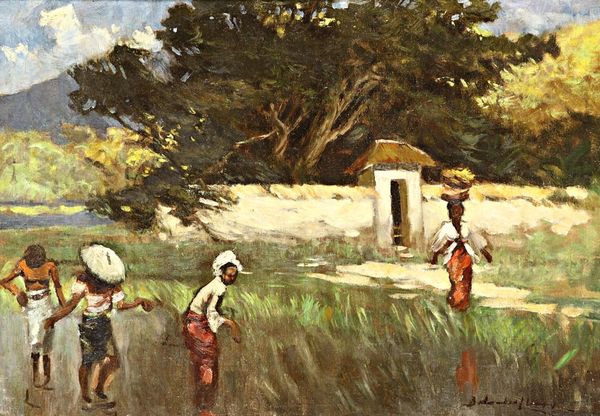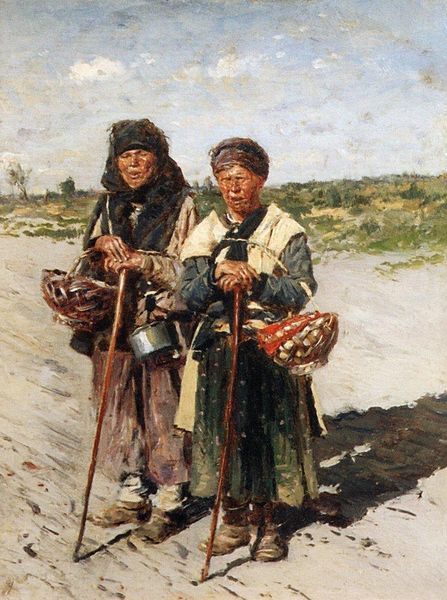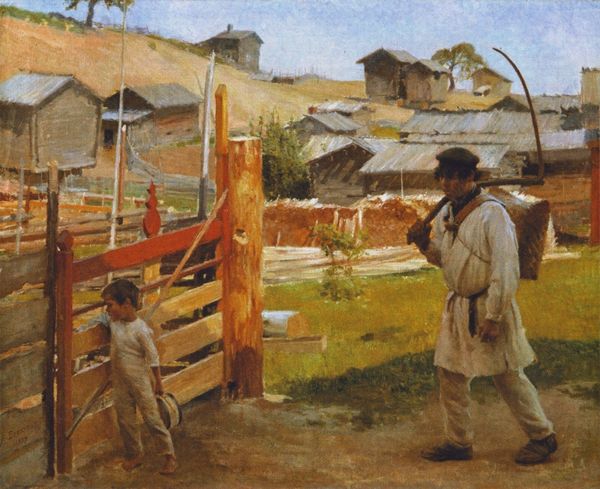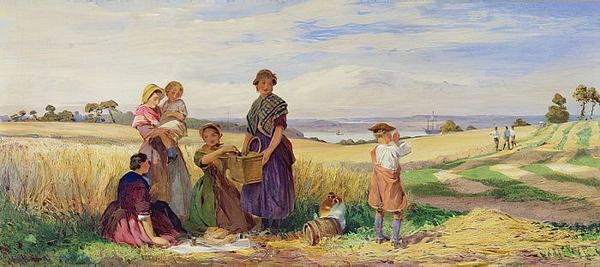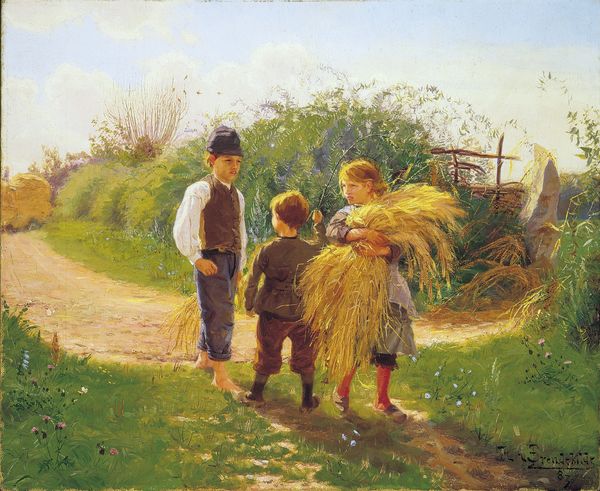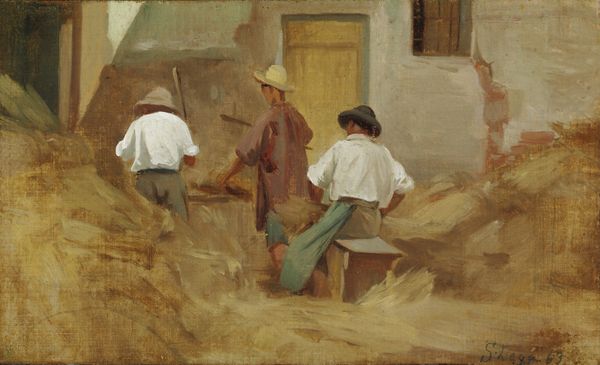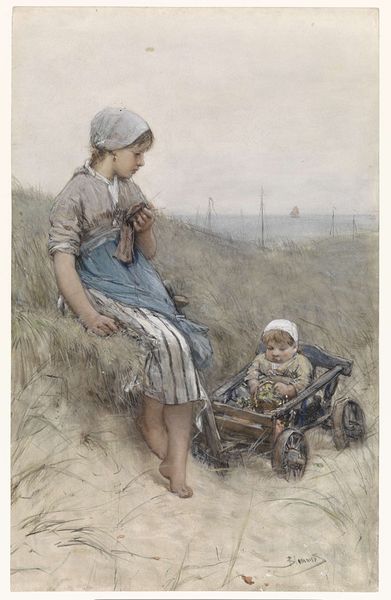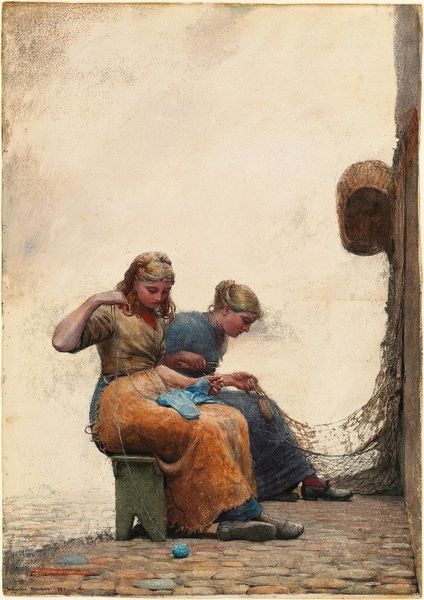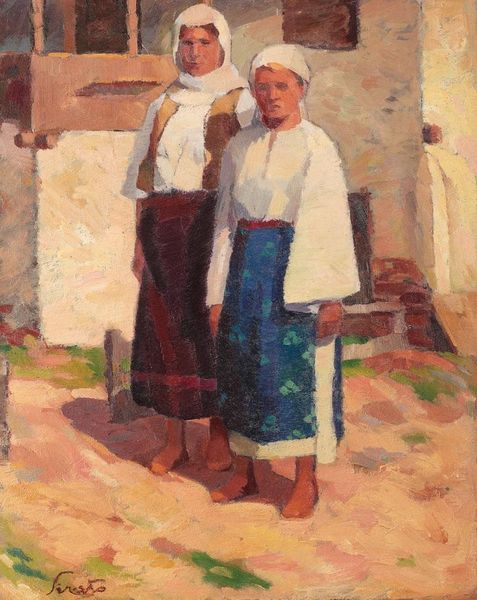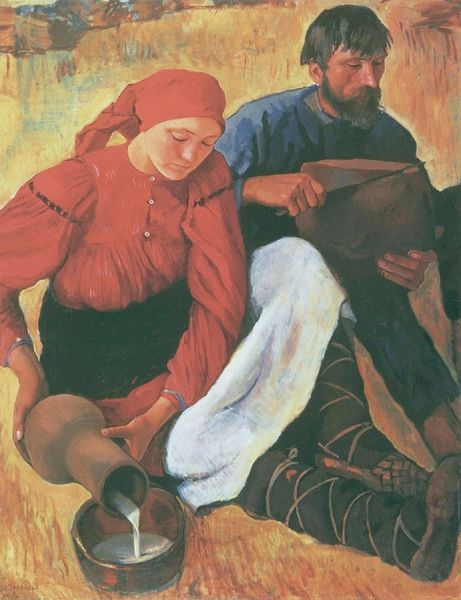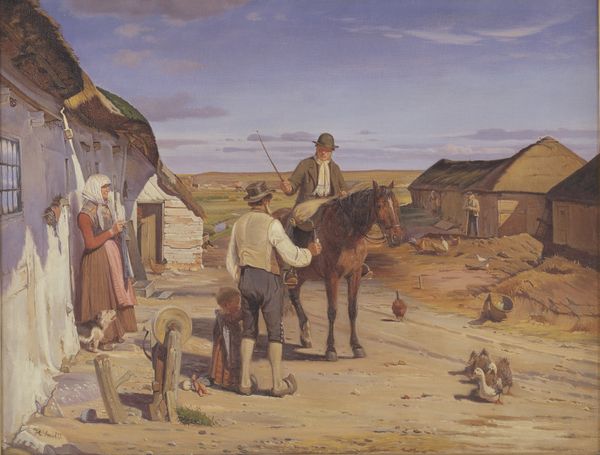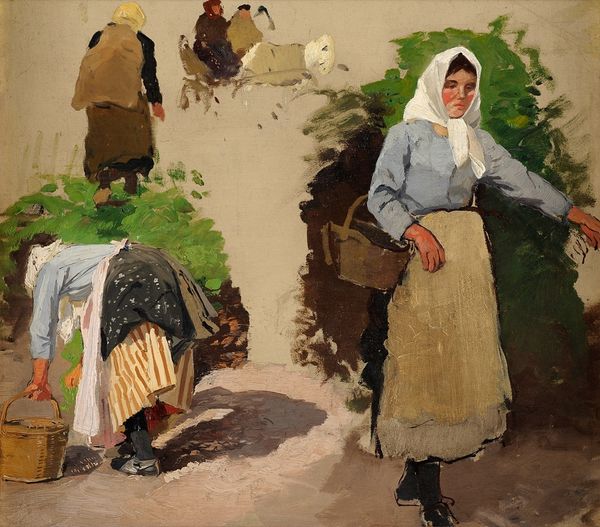
Dimensions: 36.7 x 21.7 cm
Copyright: Public domain
Curator: This is Eugene de Blaas's "Feeding the Ducks," painted in 1874. It is currently held in a private collection. Editor: This image has a charmingly folksy mood; I think it is nice to look at and very approachable. What jumps out at you about this work? Curator: Let’s consider the materiality first. Look at the subjects. What is striking is that this scene represents working-class women who wear specific, distinct textiles that communicate wealth and position. We might analyze the relationship between their labor and the textiles they are either manufacturing themselves or obtaining through trade. What do you think? Editor: I can see that! There's something really grounding about thinking about the cloth itself. It makes the image feel more concrete than just a scene of two ladies feeding ducks. Curator: Precisely! Now, consider the process of painting in this era. Oil paint was increasingly available in tubes, allowing for plein-air painting. How might this availability and medium choice impact what de Blaas could produce versus painting the same scene inside a studio? Editor: I never really thought about that before. He could create a far more dynamic work being at the actual scene. He could react to nuances of color and form and capture what the light on those specific cloths looked like as opposed to a guess. It almost gives him a different type of raw material in that respect! Curator: Indeed. And think about the consumption of such imagery. Who was buying these genre scenes, and what desires did these images fulfill? This wasn't necessarily about art for art's sake but about economics and marketability. Editor: So by buying paintings of everyday people like this, wealthy patrons could reinforce their own class status and ideas about labor? It gives me a very different understanding of the work! Curator: Exactly! I have changed my outlook on de Blaas’ paintings today. Thank you for a fresh look at the subject! Editor: It was fascinating for me as well! I learned that by exploring the historical labor practices and even materiality, we can start to unpack the socio-economic status surrounding even the most seemingly ordinary things.
Comments
No comments
Be the first to comment and join the conversation on the ultimate creative platform.
